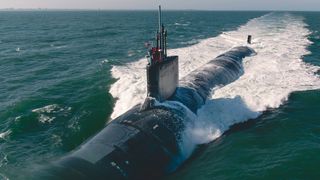All indications are that AUKUS will be on firm footing with the new Trump administration in 2025. The president-elect’s nomination of AUKUS supporters Marco Rubio to lead the State Department and Mike Waltz as national security adviser solidifies this position. The wildcard is the nomination of Pete Hegseth to lead the Pentagon. However, one of the key unifying factors of all three nominations is their mutual focus on a stronger US military and competition with China.
That said, Trump is nothing if not mercurial, and policy issues that come within his orbit always face seemingly capricious assessments. AUKUS, though, is a good “deal” for both the US and Australia. Pillar 1 provides Australia a long-term sovereign submarine capability and it aligns with US strategy in the Indo-Pacific. Trump has made it clear the US wants more capable allies and partners who pay their way: the AUKUS deal delivers on both.
In Australia Trump’s election has seen a ramping up of the voices who oppose AUKUS. Critics continue to focus opposition on erroneous claims the AUKUS technology-sharing pact erodes self-reliance in Australia’s defence, negatively impacts Australian sovereignty and that there is a lack of support for the deal.
One of the key criticisms is that somehow acquiring conventionally armed, nuclear-powered submarines (SSN) is forcing the Australian Defence Force into more dependence on the US.
Australia’s longstanding bipartisan position on the US alliance is built around the concept of self-reliance in the defence of Australia. This recognises that Australia cannot afford the cost of achieving self-sufficiency in building defence capabilities. By partnering with the US and other countries, Australia can get access to the highest levels of intelligence, technology and equipment we could not otherwise provide on our own for our security.
Most, if not all, of Australia’s major defence capabilities are developed in partnership with the US, another country or, increasingly, a consortium of countries.
Self-reliance means our Collins-class subs operate under Australian sovereign control, with a US combat system, sensors and weapons all acquired through partnerships or foreign military sales with the US. The same approach is applied to advanced aircraft, missiles, space capabilities, ground combat vehicles and every surface vessel in the navy.
It is a simple fact that Australia, independently and of its own free will, approached the UK and the US to acquire conventionally armed nuclear-powered submarine technology. We literally asked for it.
Several critics argue AUKUS is something designed by the US to impose imperial rule over Australia foreign and defence policy. However, it is a simple fact that Australia, independently and of its own free will, approached the UK and the US to acquire conventionally armed nuclear-powered submarine technology. We literally asked for it.
As part of the deal Australia is to buy (not loan, lease or borrow) US Virginia-class submarines designed to ensure we do not suffer from a submarine capability gap between the retirement of our Collins-class boats and the arrival of our own AUKUS-class SSN’s.
This moves hinges on the US’s ability to increase production of its submarine fleet. Trump’s election increases the chances of these targets being met. Republican House of Representatives leaders and the new Senate leadership are strongly supportive of both AUKUS and increased defence spending. Incoming Senate armed services committee chair Roger Wicker, a strong AUKUS proponent, helped secure an additional $US3.3bn ($5.1bn) for the US submarines industrial base in the Pentagon budget.
The voices of opposition may be boisterous, but they are limited. Labor’s grassroots protests, which Paul Keating assured us would be deafening, never amounted to more than a whimper. Labor’s national conference overwhelmingly supports it. Public polling tells us the number of Australians strongly opposed to getting SSNs represents just 7 per cent of voters. Only 4 per cent strongly believe it makes Asia less safe.






